Table of Contents
● Introduction
● Understanding the key types of doormats
● A snapshot of the doormat market in 2025
● Essential factors to consider when choosing doormats
● Top models and features for 2025
● Conclusion
Introduction
Doormats keep spaces clean and add an element of style to various places like homes and businesses. They are more than tools to prevent dirt from coming; they blend practicality with style to elevate the look of entryways and interiors. Crafted from various materials catering to different needs, such as heavy-duty cleaning or moisture absorption capabilities, choosing the doormat can enhance cleanliness levels while creating an inviting vibe for guests in residential and commercial settings.
Understanding the key types of doormats
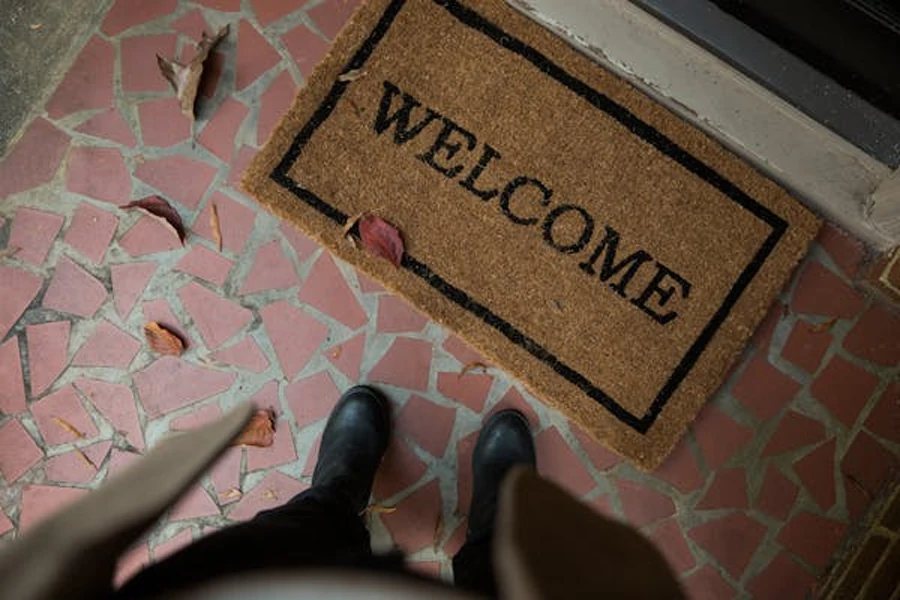
Indoor doormats for interior protection
Indoor rugs are essential for maintaining cleanliness and safety by absorbing moisture and reducing wet surfaces in areas like entrances and bathrooms. They are typically made from materials like cotton and microfiber, which are known for their softness and fast drying abilities. Cotton is highly effective at absorbing moisture quickly, while microfiber rugs provide comfort and support. These indoor rugs also enhance the look of a space by adding an aesthetic touch, making them both practical and visually pleasing.
Outdoor doormats for heavy-duty dirt control
Outdoor entryway mats are crafted to endure tough weather conditions while efficiently removing dirt and moisture. They are usually made of materials known for their lasting nature, such as coir from coconut husks and rubber. Coir mats excel in scraping off dirt from shoes because of their texture, which makes them ideal for high foot traffic spots. On the contrary, rubber mats are great at repelling water and enduring harsh weather conditions, making them slip-resistant and suitable for climates.
Decorative doormats: Blending functionality with design
Decorative mats have become trendy for blending usefulness with charm. They are available in various colors and patterns to meet the desire for a stylish entrance while keeping dirt at bay. These doormats can be crafted from materials such as fibers or coir to allow for personalization while still being practical. Although they may not be as sturdy as scraper mats, they provide a look that elevates any doorway ambiance.
Scraper doormats for high-traffic areas
Scraper mats serve in places bustling with activity where thorough dirt removal is a must-have feature. They are made from materials like rubber or sturdy synthetic fibers that are excellent at wiping away mud and debris from footwear. Their robust build ensures durability in challenging settings such as businesses or areas with frequent rain or snow. These mats focus on practicality rather than aesthetics, making them perfect for entryways that need heavy-duty cleaning.
A snapshot of the doormat market in 2025
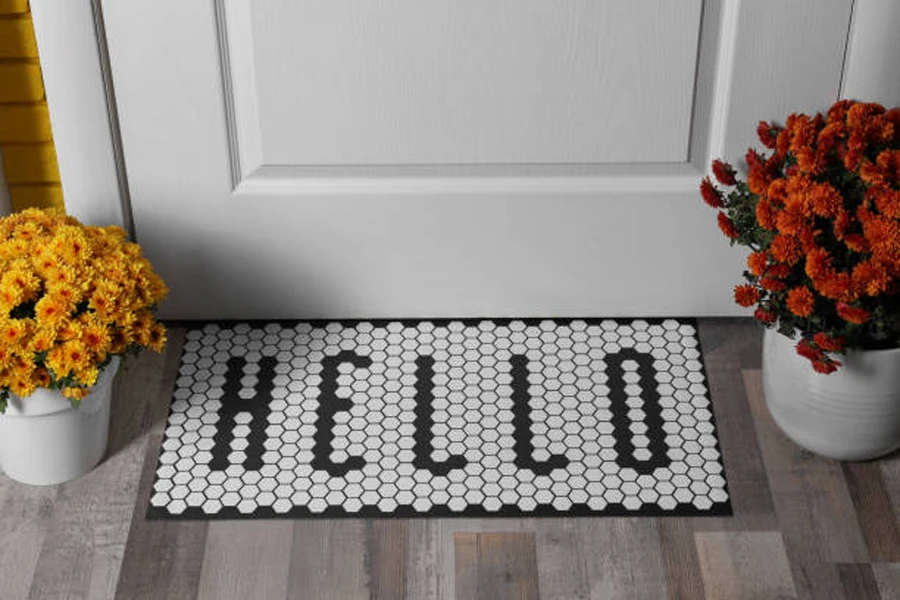
Global growth and emerging trends
The worldwide market for doormats is anticipated to witness growth over the decade, with a 6% annual growth rate from 2023 to 2032, driven by the growing trend of urban living and the increasing desire for stylish home decor items. As people emphasize cleanliness and enhance the look of their homes, the demand for doormats in both homes and businesses has significantly increased. According to a report by Allied Market Research, the global doormat market was valued at USD 3.67 billion in 2023. It is predicted to reach USD 6.20 billion by the end of 2032. The growing demand in regions such as North America and the Asia Pacific area is fueled by the development of both commercial and residential sectors.
Essential factors to consider when choosing doormats
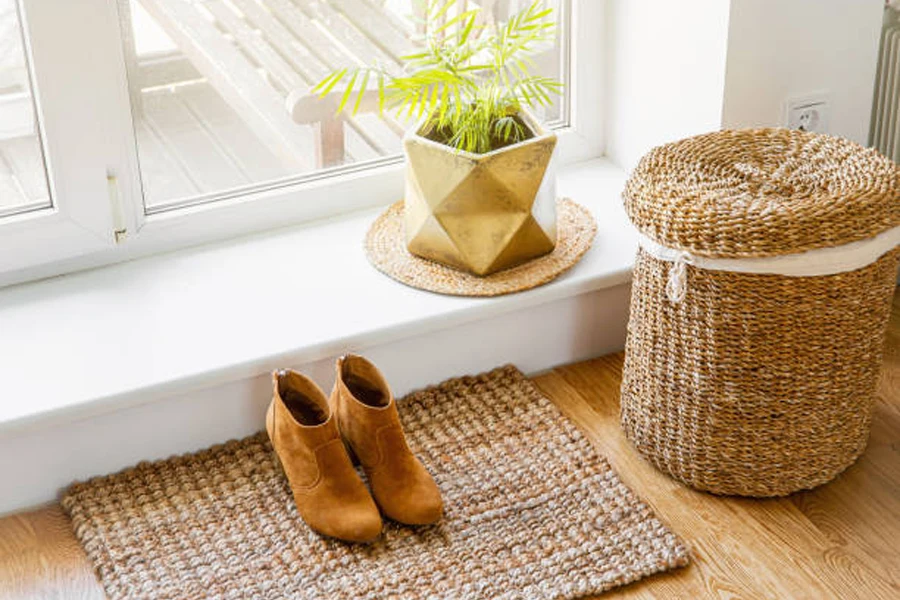
Material choices for durability and functionality
The choice of material for a doormat is essential for how it works and how long it lasts. Coir is a top option because it’s made from coconut husks and is great at trapping dirt while being durable outdoors. However, coir is absorbent and can wear out quicker when exposed to harsh weather unless shielded, so it’s best suited for covered areas. Rubber doormats are excellent for use in wet regions because they resist water well and have a nonslip surface.
Jute is another eco-friendly option that’s gaining traction for indoor use due to its softness. At the same time, synthetic fibers like nylon and polypropylene are favored for their resilience, stain resistance, and ease of maintenance in high-traffic areas.
Thickness and pile height considerations
Doormat thickness can significantly impact both functionality and placement. Thin mats, with a pile height of 0.25 to 0.5 inches, are ideal for areas with low door clearance, ensuring smooth door operation without obstruction. Mats with medium thickness (0.5 to 0.75 inches) offer a balance of durability and dirt-trapping ability, suitable for most residential entryways. For high-traffic or weather-exposed areas, thicker doormats (0.75 to 1.25 inches) provide extra cushioning and enhanced durability, ideal for trapping more dirt and absorbing water. The right pile height must be selected based on usage needs, door clearance, and the level of dirt or moisture to be managed.
Design and aesthetics: Balancing form with function
The functionality of a doormat is important, but we can’t overlook its appeal. Nowadays, businesses seek doormats that do not just work well but also enhance the overall look of their space. Decorative doormats are available in different styles, from minimalistic designs to colorful patterns and vibrant hues. It’s crucial to select designs that blend well with the surroundings while ensuring they offer features like slip resistance and water absorbency. Outdoor mats should be treated with weather coatings to maintain their appearance as time passes; indoor mats can use materials like cotton or microfiber for a more delicate touch and feel.
Top models and features for 2025
Coir and rubber doormats for outdoor use
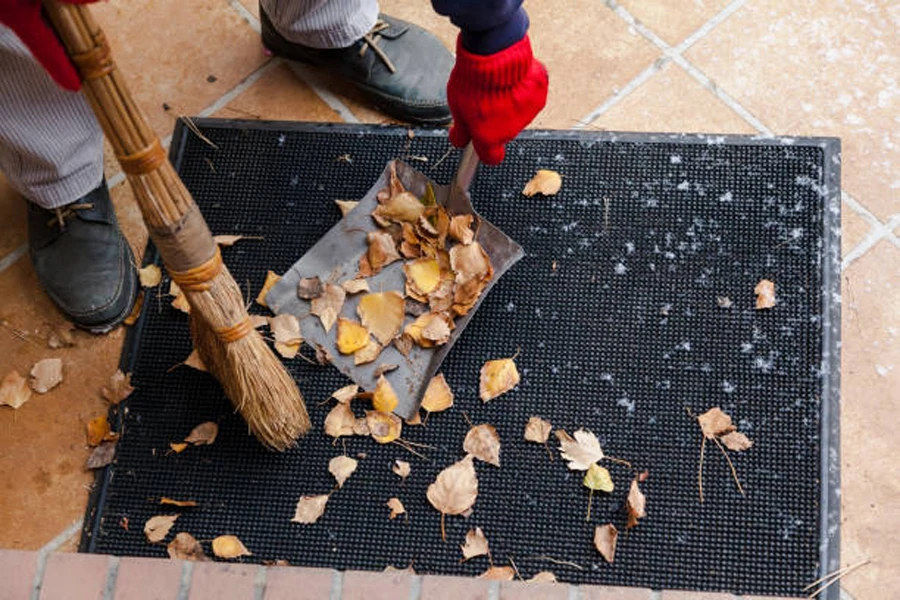
Coir and rubber doormats remain top choices for outdoor use, combining durability with effective dirt-trapping capabilities. Coir, made from natural coconut fibers, is well-regarded for its rough texture, which scrapes dirt off shoes efficiently, making it ideal for entryways in areas exposed to heavy dirt or mud. However, it’s best suited for covered outdoor spaces due to its absorbent nature. Rubber doormats are famous for their ability to withstand weather conditions with ease and offer a grip without wearing out quickly when they come into contact with rain or sunlight.
Innovative, customizable doormats
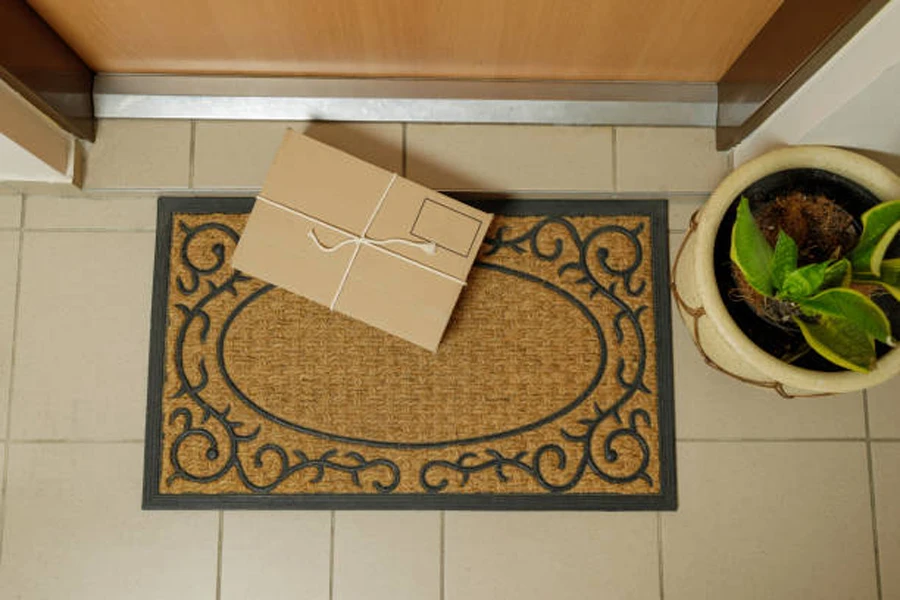
Customizable doormats are becoming increasingly popular, allowing customers to refresh their style and functionality without replacing the mat each time. The mats have covers that enable users to change designs based on seasons or special events. Often constructed with a base crafted from rubber or PVC, the mats come with a range of covers made from materials such as polyester or microfiber. Having choices to personalize does not just bring a range of styles, but it also prolongs the mat’s life since only the top surface layer requires replacing—making it an economical way to uphold both style and functionality.
Eco-friendly and sustainable doormats
The increasing interest in eco-friendly products has led to a surge in sustainable doormats crafted from materials like jute and natural fibers. These products are made using recycled polyester fibers that have proven to be long-lasting and resistant to varying weather conditions while still being eco-friendly options for consumers seeking both durability and sustainability in their home decor choices. These mats are perfect for businesses looking for eco options as they align with the increasing focus towards sustainability while offering practicality for use indoors and outdoors.
Conclusion
Choosing the ideal doormat in 2025 involves considering aesthetics alongside functionality and sustainability factors. To ensure durability in various settings, you should explore materials like coir, rubber, jute, and recycled fibers. In addition, opt for customizable and eco-friendly choices to align with changing consumer tastes and environmental expectations. This understanding enables companies to make good choices by providing goods that cater to various needs while improving the cleanliness of entrances and adding to the attractiveness of any environment.




 বাংলা
বাংলা Nederlands
Nederlands English
English Français
Français Deutsch
Deutsch हिन्दी
हिन्दी Bahasa Indonesia
Bahasa Indonesia Italiano
Italiano 日本語
日本語 한국어
한국어 Bahasa Melayu
Bahasa Melayu മലയാളം
മലയാളം پښتو
پښتو فارسی
فارسی Polski
Polski Português
Português Русский
Русский Español
Español Kiswahili
Kiswahili ไทย
ไทย Türkçe
Türkçe اردو
اردو Tiếng Việt
Tiếng Việt isiXhosa
isiXhosa Zulu
Zulu